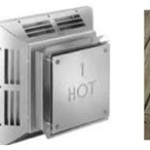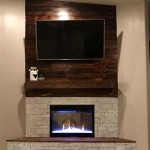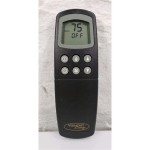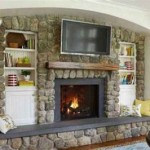Duraflame Fireplace Logs: An In-Depth Look at Convenience and Performance
Duraflame fireplace logs have become a prevalent alternative to traditional firewood in both residential and commercial settings. Their convenience, ease of use, and consistent performance have contributed to their widespread adoption. This article aims to provide a comprehensive overview of Duraflame logs, exploring their composition, advantages, disadvantages, different types, and proper usage techniques. This information is intended to facilitate a better understanding of this popular heating and ambiance solution.
The popularity of Duraflame logs stems from their ability to offer a simplified and controlled fire experience. Unlike traditional firewood, which requires sourcing, seasoning, and stacking, Duraflame logs are readily available, pre-packaged, and require minimal preparation. This convenience is particularly appealing to individuals with limited storage space, those seeking a quick and easy fire, or those who lack experience with traditional fire-building methods.
Composition and Manufacturing Process
Duraflame logs are primarily composed of a blend of recycled wood byproducts, wax, and occasionally other additives. The specific composition can vary slightly depending on the product type and intended burn time. These materials are carefully selected and processed to create a consistent and reliable fuel source.
The manufacturing process typically involves grinding the wood byproducts into a fine particulate matter. This material is then mixed with wax, most commonly paraffin wax, which acts as a binder and provides a sustained burning characteristic. Dyes and other additives may be incorporated to enhance the flame color or overall aesthetic appeal. The resulting mixture is then compressed into a log shape under high pressure.
The wax component is crucial for the sustained and predictable burn of Duraflame logs. As the wood particles ignite, the wax melts and wicks upwards, fueling the flames. This process allows for a controlled and consistent heat output over the designated burn time. The ratios of wood to wax are carefully controlled to ensure optimal performance and minimize excessive smoke or residue.
The use of recycled wood materials contributes to the environmental appeal of Duraflame logs. By utilizing wood waste products, the manufacturing process diverts materials from landfills and reduces the demand for freshly harvested timber. However, it is important to note that the burning of any wood product, including Duraflame logs, will release emissions into the atmosphere. These emissions are generally lower than those produced by burning unseasoned or improperly burned firewood.
Advantages of Using Duraflame Logs
Duraflame logs offer several distinct advantages over traditional firewood, making them a popular choice for many consumers. These benefits extend beyond mere convenience and encompass aspects of safety, environmental impact, and overall user experience.
One of the primary advantages is ease of use. Duraflame logs require no splitting, stacking, or seasoning. They are ready to use directly from the package, simplifying the fire-starting process. This is particularly beneficial for individuals who are new to fire-building or those who lack the physical strength or tools required to handle traditional firewood.
Consistent burn times are another significant advantage. Duraflame logs are designed to burn for a specific duration, typically ranging from two to four hours, depending on the log size and type. This predictable burn time allows users to plan their fire accordingly and avoid the inconvenience of constantly tending to the flames.
Reduced smoke and creosote buildup is another benefit. Compared to unseasoned or improperly burned firewood, Duraflame logs generally produce less smoke and creosote. Creosote is a flammable byproduct of wood combustion that can accumulate in chimneys and increase the risk of chimney fires. The lower moisture content and controlled burning characteristics of Duraflame logs contribute to reduced creosote formation.
Duraflame logs can also be stored easily and neatly. Unlike piles of firewood, which can take up considerable space and attract pests, Duraflame logs are compact and packaged, allowing for convenient storage indoors or outdoors. This is particularly advantageous for individuals with limited storage space.
Finally, Duraflame logs offer a relatively consistent heat output. While heat output can vary depending on the log size and type, the controlled burning characteristics of Duraflame logs generally result in a more predictable and consistent heat output compared to traditional firewood. This makes it easier to regulate the temperature of a room or space during use.
Disadvantages and Considerations
While Duraflame logs offer numerous advantages, it is essential to consider their limitations and potential drawbacks. Understanding these factors allows for an informed decision regarding their suitability for specific needs and applications.
One potential disadvantage is cost. Duraflame logs are typically more expensive per burn hour than traditional firewood. While the convenience and other benefits may justify the higher cost for some users, budget-conscious individuals may find traditional firewood to be a more economical option.
Aesthetic limitations can also be a factor. While Duraflame logs produce flames, they lack the natural aroma and crackling sounds associated with traditional firewood. For individuals who prioritize the sensory experience of a natural wood fire, Duraflame logs may not be a satisfactory substitute.
Emissions are also a consideration. While Duraflame logs generally produce less smoke than unseasoned firewood, they still release emissions into the atmosphere. These emissions include carbon dioxide, particulate matter, and other pollutants. Individuals concerned about air quality may want to minimize their use of any wood-burning fuel, including Duraflame logs.
Artificial components are another factor to consider. The presence of wax and other additives in Duraflame logs may be a concern for individuals who prefer natural or organic products. While the wax used is generally non-toxic, some individuals may prefer to avoid burning any products containing artificial components.
Finally, residue management is an important aspect to consider. While Duraflame logs produce less ash than traditional firewood, they still leave behind some residue. This residue must be properly disposed of after the fire has completely extinguished. Improper disposal of ash can pose a fire hazard or environmental concern.
Types of Duraflame Logs and Their Applications
Duraflame offers a variety of log types tailored to different needs and preferences. These variations in size, burn time, and special features allow consumers to select the most appropriate product for their specific fire-burning requirements.
Standard Duraflame logs are the most common type and are designed for general-purpose use. These logs typically burn for two to four hours and are suitable for providing warmth and ambiance in fireplaces and wood stoves. They are available in various sizes to accommodate different fireplace dimensions.
Gold Duraflame logs are designed for longer burn times and increased heat output. These logs are typically larger than standard Duraflame logs and contain a higher proportion of wax. They are ideal for providing sustained warmth during extended periods of use.
Crackling Duraflame logs incorporate materials designed to produce a crackling sound similar to that of natural wood. These logs offer a more authentic fire experience for users who appreciate the auditory aspects of a traditional wood fire. The crackling effect is typically achieved through the inclusion of small, dry wood chips within the log.
Color Flame Duraflame logs contain additives that produce colored flames. These logs are popular for creating a visually appealing and unique fire experience. The flame colors can vary depending on the additives used, ranging from blue and green to red and purple.
Campfire logs are designed for outdoor use in campfires and fire pits. These logs are typically smaller and lighter than indoor Duraflame logs, making them easier to transport and handle. They are also formulated to burn cleaner and produce less smoke, minimizing the impact on the surrounding environment.
Proper Usage and Safety Precautions
To ensure safe and effective use of Duraflame logs, it is essential to follow the manufacturer’s instructions and adhere to general fire safety guidelines. Proper usage techniques not only enhance the performance of the logs but also minimize the risk of accidents or property damage.
Before using Duraflame logs, it is crucial to ensure that the fireplace or wood stove is clean and in good working order. The chimney should be inspected and cleaned regularly to prevent creosote buildup. Any mechanical dampers should function properly to ensure adequate ventilation.
When lighting Duraflame logs, it is recommended to follow the instructions printed on the packaging. Typically, this involves placing the log on a grate or raised surface within the fireplace or wood stove. The log should then be lit using a match or lighter, focusing on the edges of the log where the wood particles are exposed.
Once the log has ignited, it is important to allow it to burn undisturbed. Avoid poking or stirring the log, as this can disrupt the burning process and reduce its overall performance. Ensure that the area around the fireplace or wood stove is clear of flammable materials, such as curtains, furniture, and newspapers.
Never leave a burning fire unattended. Always supervise the fire and monitor it closely until it has completely extinguished. Keep a fire extinguisher or a bucket of water nearby in case of emergencies.
After the fire has extinguished, allow the ash and residue to cool completely before disposal. Dispose of the ash in a metal container with a tight-fitting lid. Never dispose of hot ash in a plastic container or directly into a trash can containing flammable materials.
It is also important to be aware of local regulations regarding wood burning. Some municipalities have restrictions on the use of fireplaces and wood stoves, particularly during periods of high air pollution. Adhere to all local regulations and guidelines to ensure compliance.

Duraflame 6lb Firelogs For Fireplaces Burns Up To 4 Hours

Duraflame 4 5 Lb Gold Premium Fireplace Firelogs With Big Bright Flames

Duraflame 6lb Firelogs For Fireplaces Burns Up To 4 Hours

Duraflame Indoor Outdoor Firelogs 4 5 Lb Firelog

Duraflame 4 5 Lb Gold Premium Fireplace Firelogs With Big Bright Flames

Duraflame Fire Logs 6 Ct Lb Harris Teeter

Duraflame Indoor Outdoor 4 5 Lb Fire Log 9 Pack In The Logs Firestarters Department At Com

Duraflame 6lb Firelogs For Fireplaces Burns Up To 4 Hours

Are Artificial Firelogs Any Good Wirecutter

Duraflame Every Night Firelogs Burns For 2 5 Hours








